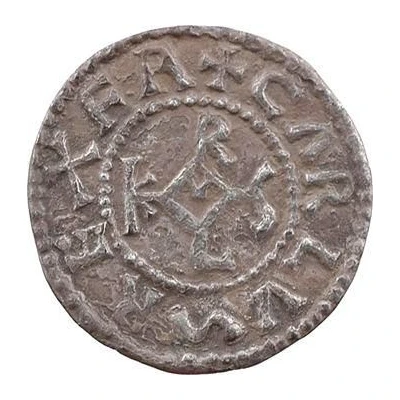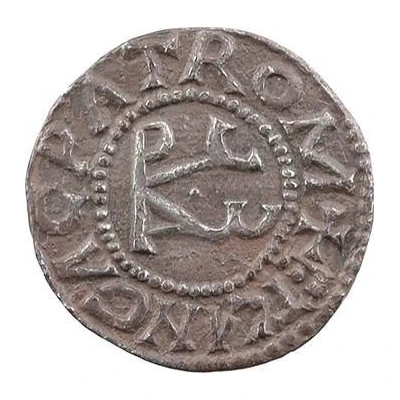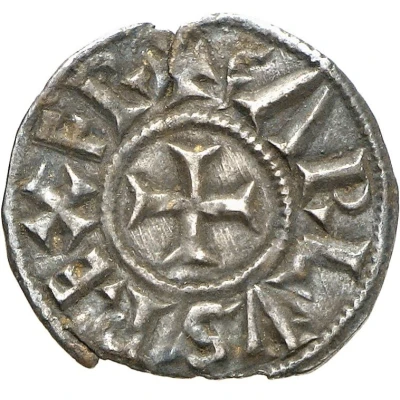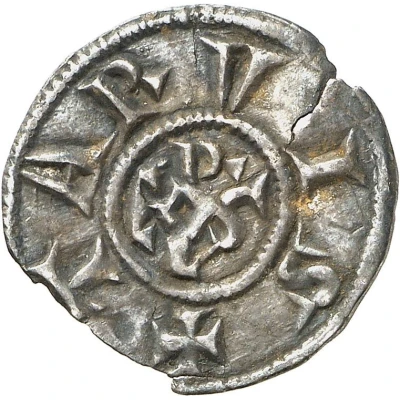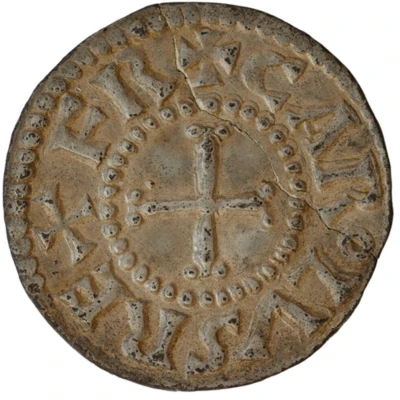
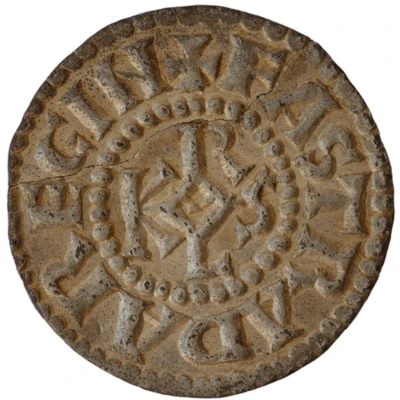

© Holger Hermannsen, Centre Charlemagne, Aachen
Denier - Charlemagne and Fastrada
| Silver | 1.63 g | 21 mm |
| Issuer | Unified Carolingian Empire |
|---|---|
| King | Charlemagne (Karolus) (768-814) |
| Queen | Fastrada (783-794) |
| Type | Standard circulation coin |
| Years | 793-794 |
| Value | 1 Denier (1⁄240) |
| Currency | Pound (751-843) |
| Composition | Silver |
| Weight | 1.63 g |
| Diameter | 21 mm |
| Shape | Round (irregular) |
| Technique | Hammered |
| Orientation | Variable alignment ↺ |
| Demonetized | Yes |
| Updated | 2024-10-09 |
| Numista | N#364217 |
|---|---|
| Rarity index | 100% |
Reverse
KRLS monogram, legend around.
Script: Latin
Lettering: ✠ FASTRADA REGIN
Unabridged legend: FASTRADA REGINA
Translation: Queen Fastrada.
Comment
This type is unique. Simon Coupland attributes it to Aachen and hypothesizes that Charlemagne would have been inspired by the Mercian type of Offa in the name of Queen Cynethryth (see link below) to pay homage to his wife Fastrada.Source : Simon Coupland; 2023. "A coin of Queen Fastrada and Charlemagne", Early Medieval Europe. https://onlinelibrary.wiley.com/doi/10.1111/emed.12640
Interesting fact
One interesting fact about the Standard circulation coin Denier - Charlemagne and Fastrada (793-794) from Unified Carolingian Empire made of Silver weighing 1.63 g is that it features a unique design that reflects the cultural and historical significance of the time period in which it was minted. The coin's obverse side features an image of Charlemagne, the King of the Franks, while the reverse side features an image of Fastrada, his wife. This coin was minted during a time of great cultural and political change in Europe, and its design reflects the influence of the Carolingian Renaissance, which was a period of cultural and intellectual revival that took place during Charlemagne's reign. The coin's silver content and intricate design make it a valuable and sought-after collector's item among numismatists and historians.
